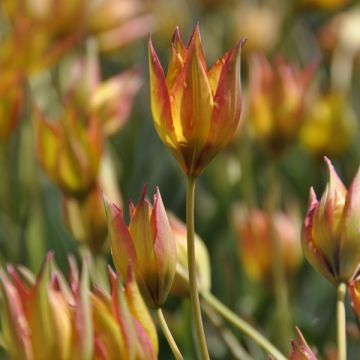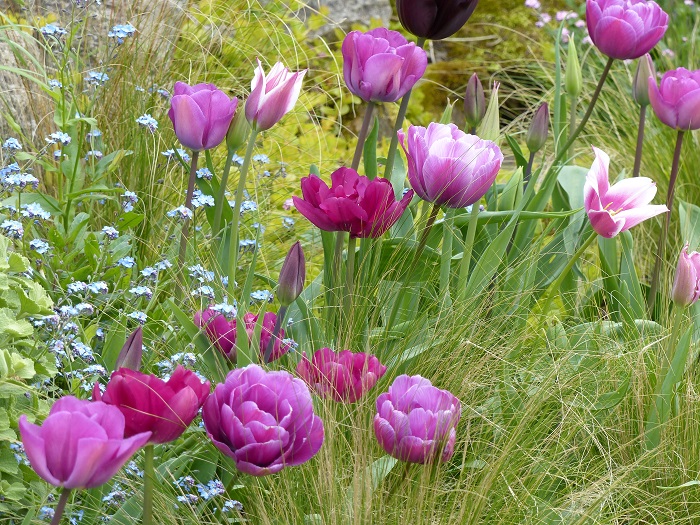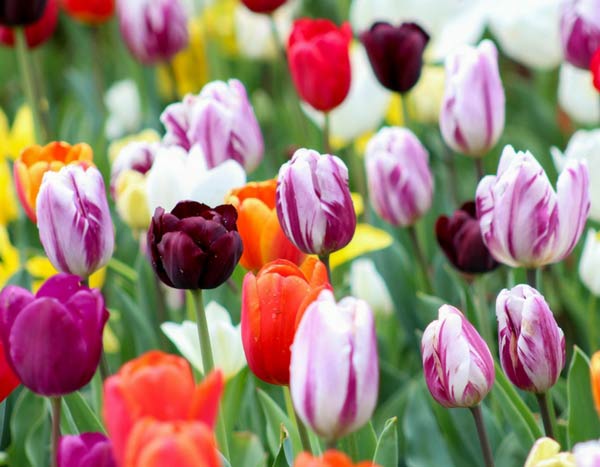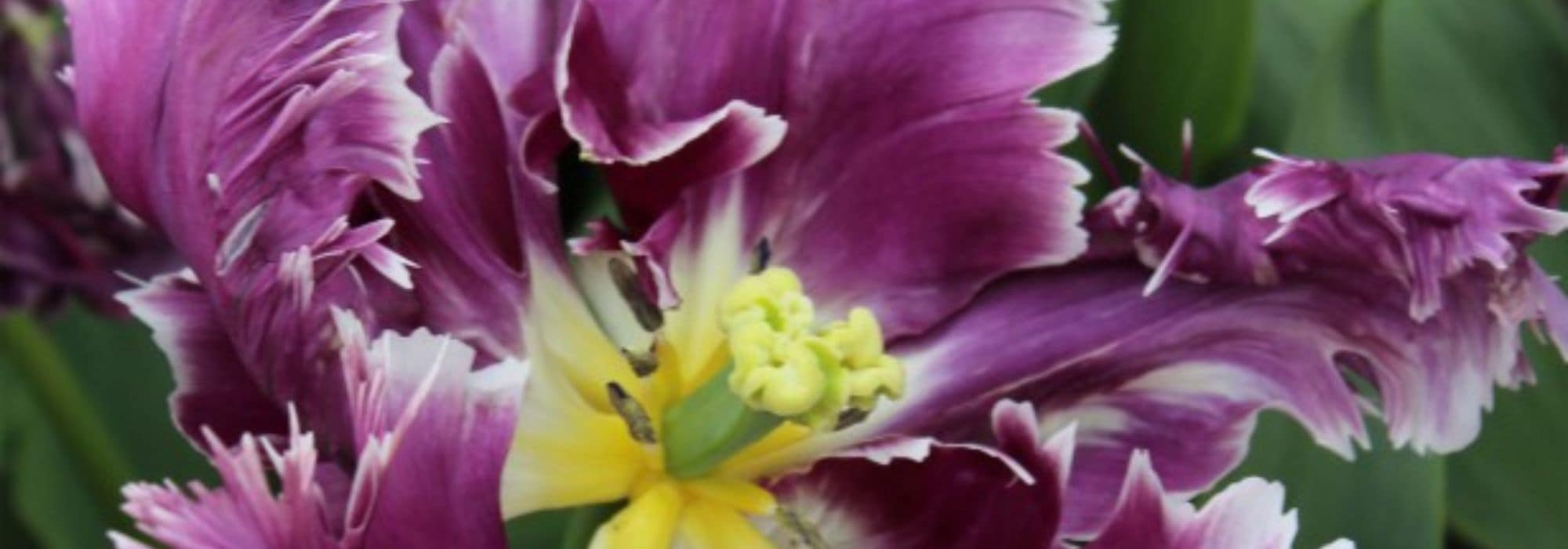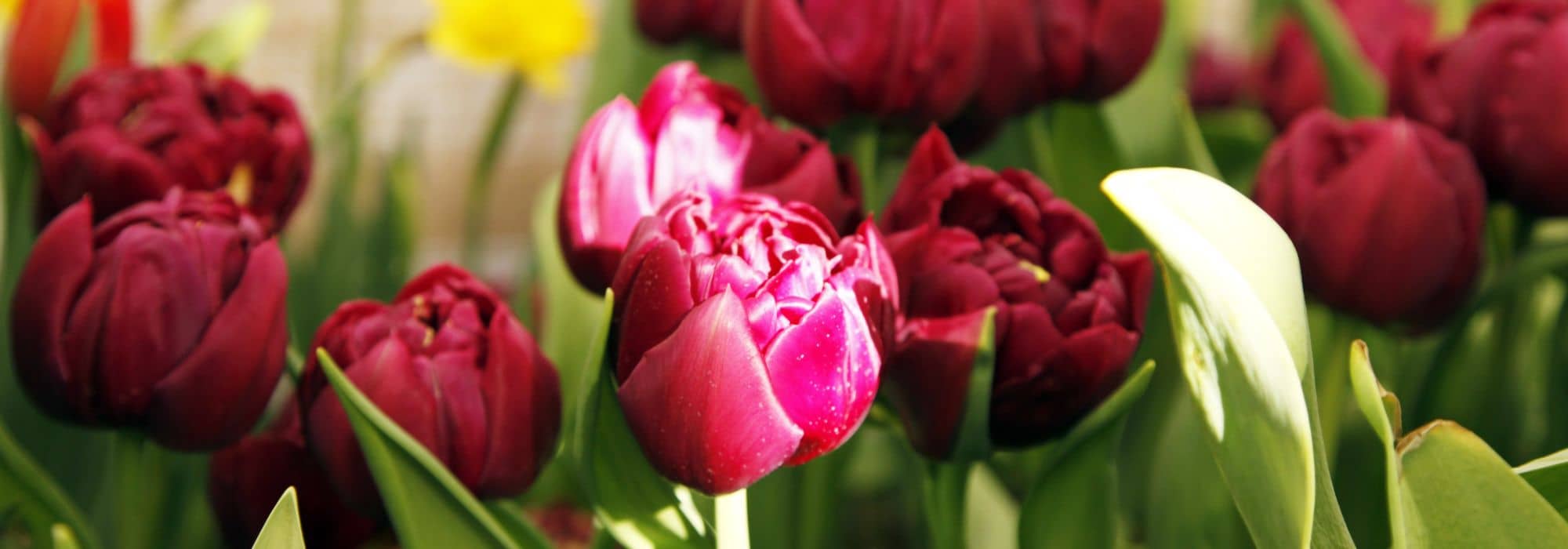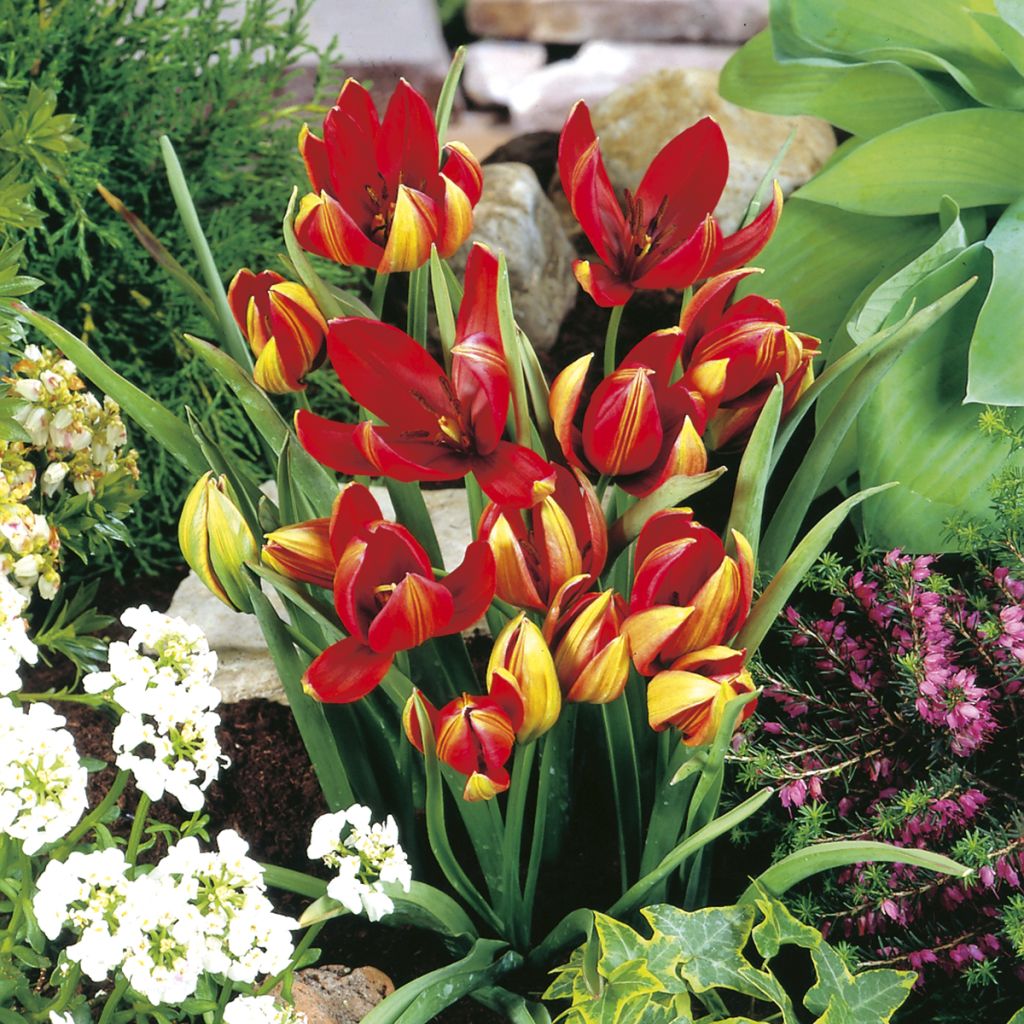

Tulipa hageri - Botanical Tulip
Tulipa hageri - Botanical Tulip
Tulipa hageri
Hager's Tulip
Special offer!
Receive a €20 voucher for any order over €90 (excluding delivery costs, credit notes, and plastic-free options)!
1- Add your favorite plants to your cart.
2- Once you have reached €90, confirm your order (you can even choose the delivery date!).
3- As soon as your order is shipped, you will receive an email containing your voucher code, valid for 3 months (90 days).
Your voucher is unique and can only be used once, for any order with a minimum value of €20, excluding delivery costs.
Can be combined with other current offers, non-divisible and non-refundable.
This plant carries a 6 months recovery warranty
More information
We guarantee the quality of our plants for a full growing cycle, and will replace at our expense any plant that fails to recover under normal climatic and planting conditions.
Would this plant suit my garden?
Set up your Plantfit profile →
Description
The Hageri Tulip or Hager's Tulip is a small botanical tulip that does not go unnoticed in spring. Its red copper flowers open in the sun to reveal a black throat mixed with olive green, surrounded by a yellow halo. At the end of April, it adds a magnificent touch of colour to any setting. Like many botanical species, this small tulip naturalises easily in the garden and faithfully blooms year after year. Plant it in full sun or partial shade, in a rock garden or raised bed to provide perfect drainage for its bulb.
The Hageri tulip is a small wild bulbous plant endemic to central Greece, the Peloponnese, and the Parnes Mountains. It is also found in Crete and in the vicinity of Izmir in Turkey, growing in woods and meadows. It is closely related to orphanidea tulips and whittallii tulips, with which it readily hybridizes. All these plants belong to the lily family. Mediterranean species are generally hardy. However, they dislike stagnant moisture, appreciate summer heat, and dry soil in summer, which allows the bulb to ripen while dormant at this time of year. The light greyish-green foliage of Hager's tulip often develops in January. It consists of 2 to 7 lanceolate leaves, pointed at their tips. The 5 to 8 cm (2 to 3in) flowers in diameter, slightly fragrant, appear between April and early May, earlier or later depending on the climate. Usually grouped in 2 to 5, they are carried 15 cm (6in) above the ground by slender but sturdy stems that bend gracefully in the wind. Oval and spindle-shaped, they open widely when fully bloomed, in star-shaped clusters of pointed petals. The flowers open in the sun and close when it is hidden. This tulip propagates through bulblets and eventually forms beautiful colonies. The foliage dries up and disappears with the arrival of heat.
Botanical tulips do not degenerate over time like large-flowered tulips. They naturalise and can remain in place for several years without special care. These plants thrive in borders and rock gardens, in very well-drained soil. To create colourful scenes, they can be associated with each other, as well as with various small bulb plants such as Crocus, Muscari, Cyclamen, Snowdrops, Squills, etc. These tulips are also beautiful additions to flowering pots.
In France, there are various wild species, many of which are endangered. In cultivation, they are called “botanical tulips”, and one of the most common is the wild tulip (Tulipa sylvestris), which used to often grow sheltered by vines. Its subspecies australis is known as the southern tulip.
Plant habit
Flowering
Foliage
Botanical data
Tulipa
hageri
Liliaceae
Hager's Tulip
Mediterranean
Other Botanical Tulips
View all →Planting and care
Plant Tulipa hageri bulbs in autumn, from September to December, at a depth of 8-10 cm (3-4in), spacing them 10 cm (4in) apart. The planting should be done in slightly acidic, neutral, or even calcareous soil, loose, well-worked, light, and well-draining. Botanical tulips appreciate dry soils in summer and cold winters without excess humidity. Never add manure or poorly decomposed compost to the planting soil, as it could cause the bulbs to rot. Tulips will thrive in moist to dry soil. Plant them in a sunny or partially shaded location.
Tip for Flowering Carpets:
You can create beautiful flowered spaces around the house, in flower beds, around trees, or in wild areas. It's an economical and sustainable solution, provided you follow a few principles:
1) It's a planting to be left in place.
2) Choose the varieties carefully based on the situation.
3) A period of rest is essential after flowering for the bulbs to replenish themselves. Let the foliage turn yellow and dry before cutting it.
4) Organic fertiliser should be spread once a year in autumn.
Planting period
Intended location
Care
Planting & care advice
This item has not been reviewed yet - be the first to leave a review about it.
Haven't found what you were looking for?
Hardiness is the lowest winter temperature a plant can endure without suffering serious damage or even dying. However, hardiness is affected by location (a sheltered area, such as a patio), protection (winter cover) and soil type (hardiness is improved by well-drained soil).

Photo Sharing Terms & Conditions
In order to encourage gardeners to interact and share their experiences, Promesse de fleurs offers various media enabling content to be uploaded onto its Site - in particular via the ‘Photo sharing’ module.
The User agrees to refrain from:
- Posting any content that is illegal, prejudicial, insulting, racist, inciteful to hatred, revisionist, contrary to public decency, that infringes on privacy or on the privacy rights of third parties, in particular the publicity rights of persons and goods, intellectual property rights, or the right to privacy.
- Submitting content on behalf of a third party;
- Impersonate the identity of a third party and/or publish any personal information about a third party;
In general, the User undertakes to refrain from any unethical behaviour.
All Content (in particular text, comments, files, images, photos, videos, creative works, etc.), which may be subject to property or intellectual property rights, image or other private rights, shall remain the property of the User, subject to the limited rights granted by the terms of the licence granted by Promesse de fleurs as stated below. Users are at liberty to publish or not to publish such Content on the Site, notably via the ‘Photo Sharing’ facility, and accept that this Content shall be made public and freely accessible, notably on the Internet.
Users further acknowledge, undertake to have ,and guarantee that they hold all necessary rights and permissions to publish such material on the Site, in particular with regard to the legislation in force pertaining to any privacy, property, intellectual property, image, or contractual rights, or rights of any other nature. By publishing such Content on the Site, Users acknowledge accepting full liability as publishers of the Content within the meaning of the law, and grant Promesse de fleurs, free of charge, an inclusive, worldwide licence for the said Content for the entire duration of its publication, including all reproduction, representation, up/downloading, displaying, performing, transmission, and storage rights.
Users also grant permission for their name to be linked to the Content and accept that this link may not always be made available.
By engaging in posting material, Users consent to their Content becoming automatically accessible on the Internet, in particular on other sites and/or blogs and/or web pages of the Promesse de fleurs site, including in particular social pages and the Promesse de fleurs catalogue.
Users may secure the removal of entrusted content free of charge by issuing a simple request via our contact form.
The flowering period indicated on our website applies to countries and regions located in USDA zone 8 (France, the United Kingdom, Ireland, the Netherlands, etc.)
It will vary according to where you live:
- In zones 9 to 10 (Italy, Spain, Greece, etc.), flowering will occur about 2 to 4 weeks earlier.
- In zones 6 to 7 (Germany, Poland, Slovenia, and lower mountainous regions), flowering will be delayed by 2 to 3 weeks.
- In zone 5 (Central Europe, Scandinavia), blooming will be delayed by 3 to 5 weeks.
In temperate climates, pruning of spring-flowering shrubs (forsythia, spireas, etc.) should be done just after flowering.
Pruning of summer-flowering shrubs (Indian Lilac, Perovskia, etc.) can be done in winter or spring.
In cold regions as well as with frost-sensitive plants, avoid pruning too early when severe frosts may still occur.
The planting period indicated on our website applies to countries and regions located in USDA zone 8 (France, United Kingdom, Ireland, Netherlands).
It will vary according to where you live:
- In Mediterranean zones (Marseille, Madrid, Milan, etc.), autumn and winter are the best planting periods.
- In continental zones (Strasbourg, Munich, Vienna, etc.), delay planting by 2 to 3 weeks in spring and bring it forward by 2 to 4 weeks in autumn.
- In mountainous regions (the Alps, Pyrenees, Carpathians, etc.), it is best to plant in late spring (May-June) or late summer (August-September).
The harvesting period indicated on our website applies to countries and regions in USDA zone 8 (France, England, Ireland, the Netherlands).
In colder areas (Scandinavia, Poland, Austria...) fruit and vegetable harvests are likely to be delayed by 3-4 weeks.
In warmer areas (Italy, Spain, Greece, etc.), harvesting will probably take place earlier, depending on weather conditions.
The sowing periods indicated on our website apply to countries and regions within USDA Zone 8 (France, UK, Ireland, Netherlands).
In colder areas (Scandinavia, Poland, Austria...), delay any outdoor sowing by 3-4 weeks, or sow under glass.
In warmer climes (Italy, Spain, Greece, etc.), bring outdoor sowing forward by a few weeks.































